Must-Read! What Is Futures Trading? Find Out in 3 Minutes
Related Articles
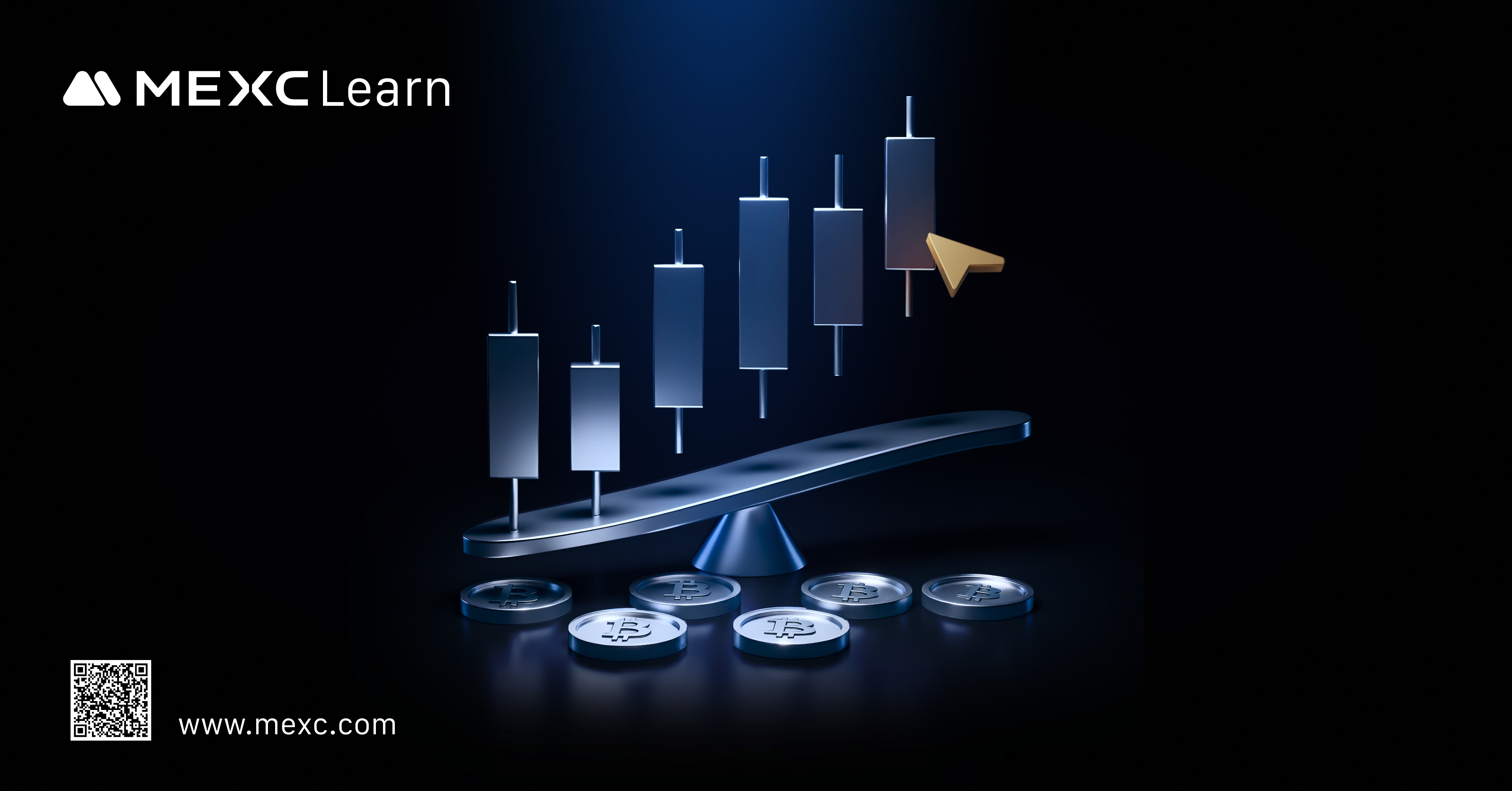
In this article, you will use MEXC Learn to explore the fundamentals of futures trading. This simple guide will help you easily understand the derivatives market and learn about the Futures trading products offered by MEXC.
Article Summary:
1. A futures contract is a type of derivative contract, commonly used by traders in today’s financial markets to manage risk.
2. The formal futures markets originated in 17th-century Netherlands, with the most famous example being tulip futures. In 1848, 82 merchants founded the Chicago Board of Trade (CBOT), and the Chicago Futures Exchange born from it became the world’s first futures exchange.
3. MEXC is a leading futures exchange in the cryptocurrency market, offering over 1,200 trading pairs such as Bitcoin Perpetual Futures and Ethereum Perpetual Futures. Users can trade via the MEXC website and App in flexible ways. In addition, MEXC Futures trading provides up to 500x leverage, greatly increasing capital efficiency.
4. While futures trading offers many opportunities for investors, it is important to recognize that it is a form of trading with a relatively high professional threshold. Every investor should have mature risk management awareness.
Futures contracts are a form of derivative contract that obligates both parties to complete a transaction for an asset at a fixed future date and rate. Buyers and sellers must adhere to the price set when booking the future contract. This means that no matter the asset's current price, the transaction must take place at the agreed-upon price in the contract.
Contracts can cover any physical commodity or financial instrument. These contracts are detailed enough to specify the quantity of the underlying asset they cover. They are a common tool for hedging against price fluctuations in underlying assets.
1. Origin of Futures Contracts
Futures trading is a financial instrument that originated in ancient times and gradually evolved into its modern form. Its core purpose is to mitigate the risk of commodity price fluctuations by locking in prices in advance. Modern futures contracts originated in 17th-century Europe, where merchants began buying and selling goods through similar agreements in markets, particularly for wool, spices, and metal ores. These agreements laid the groundwork for modern futures trading.
In 1848, the Chicago Board of Trade (CBOT) was founded, becoming the world's first formal futures exchange. In the late 19th century, the CBOT began introducing standardized futures contracts, clearly specifying the type, quantity, quality, and delivery date of the traded commodities. This standardization greatly improved trading efficiency, reduced costs, and drove the development of the futures market.
2. What is a Contract? How Does It Work?
A contract allows traders to fix the price of an asset in the future. This asset can be any commonly traded commodity, such as oil, gold, silver, corn, sugar, or cotton. The underlying asset can also be stocks, currency pairs, cryptocurrencies, or government bonds.
A contract locks in the price of any of these assets for a future date. Standard contracts have an expiration date and a set price. The expiration date or month is typically used to identify futures. For example, a corn futures contract expiring in January is called the January Corn Contract. Let's use a case study of corn as a commodity futures trade to illustrate the process more clearly:
Assume Alice is a corn grower, and Candy is a corn buyer. In real production, the corn growing cycle is long and is subject to many factors such as unusual weather and pests, leading to uncertain yields. For Alice, ensuring that her final selling price doesn't fall below her production cost is very important. For Candy, her goal is to secure enough corn at the lowest possible price. This is the foundation for engaging in futures trading.
Let's further assume Alice's production cost per ton of corn is $100, and Candy's expected purchase cost is not higher than $110 per ton. Alice and Candy can sign a futures contract before the corn is harvested with these terms:
Person | Trading Asset | Production Cost Price | Purchase Price | Agreed Price | Nominal Profit |
Alice | Corn | $100/ton | $105/ton | $5/ton | |
Candy | Corn | $105/ton | $5/ton |
Once Alice and Candy sign the contract, at harvest time there are three possible scenarios:
Scenario | Corn Final Yield | Corn Final Market Price | Alice Cost Price | Candy Purchase Price | Alice Final Profit |
Scenario 1 | Higher than expected | Lower than $100/ton | $100/ton | $105/ton | Higher than $5/ton |
Scenario 2 | As expected | About $100/ton | $100/ton | $105/ton | $5/ton |
Scenario 3 | Lower than expected | Higher than $100/ton | $100/ton | $105/ton | Lower than $5/ton |
From this simple example, we can see that as the futures contract buyer, Candy has the right to acquire ownership of the corn at the agreed price of $105/ton upon contract expiration. Although there is the risk of buying at a price higher than the Spot market, the key is being able to lock in the needed commodity in advance. Also, it's important to note that buyers can sell their contracts to others, relieving themselves of their contractual obligations.
3. Similarities and Differences Between Crypto Futures Trading and Traditional Futures Trading
The basic rules of cryptocurrency market futures contracts are derived from the traditional futures markets. Below is a brief comparison table:
Contract Trading Type | Underlying Asset | Trading Hours | Physical Delivery Involved | Cross-Border Trading Restrictions | Volatility |
Traditional Futures | Commodities, precious metals, stock indices, forex, etc. | Restricted by exchange hours (generally not 24/7) | Some require delivery, others do not | Significant | Relatively lower |
Crypto Futures | Crypto assets | 24/7 trading | No delivery required | Relatively fewer | Relatively higher |
From the comparison above, it's clear that the overall market size of the crypto market is relatively small. As of July 3, 2025, the crypto market's notional capitalization is about $3.8 trillion, which is still very small compared to, for example, gold's market capitalization of approximately $20 trillion. Therefore, price volatility in crypto tends to be higher than in gold, stock indices, or commodities.
On the other hand, crypto futures also have many advantages, such as 24/7 trading, minimal geographic restrictions, no delivery requirements, and greater volatility, which provides traders with more trading opportunities.
4. Why Traders Should Choose MEXC Futures
Futures trading offers many advantages for all investors. Because they are financial derivatives based on the value of financial or physical assets, they are well-suited for risk management and hedging in crypto mining and trading. This risk mitigation makes futures trading more risk-efficient.
MEXC Futures offers users over 1,000 trading pairs, covering not only mainstream crypto products like Bitcoin Perpetual Futures, but also quickly listing highly volatile trending pairs like PEPEUSDT and TRUMPUSDT to provide more diverse trading choices.
In addition, MEXC is favored by investors for its highly competitive low fees. Currently, the MEXC Futures market offers 143 trading pairs with 0 fees (both maker and taker fees are zero).
Of course, as a form of trading with a relatively high professional threshold, futures trading places high demands on traders' experience and risk management skills. Any investor trading crypto futures must thoroughly understand the potential risks brought by crypto's high volatility. For more on futures risk management, see: "High-Leverage Trading Strategies: Balancing Capital Efficiency and Risk Management."
5. How to Access the MEXC Futures Trading Interface
5.1 If MEXCers plan to trade on the web, please follow these steps to use the MEXC site to buy crypto Futures:
Open the MEXC homepage, hover over the top menu bar's Futures section, then select your preferred type of Futures trading from the dropdown menu or click this link.
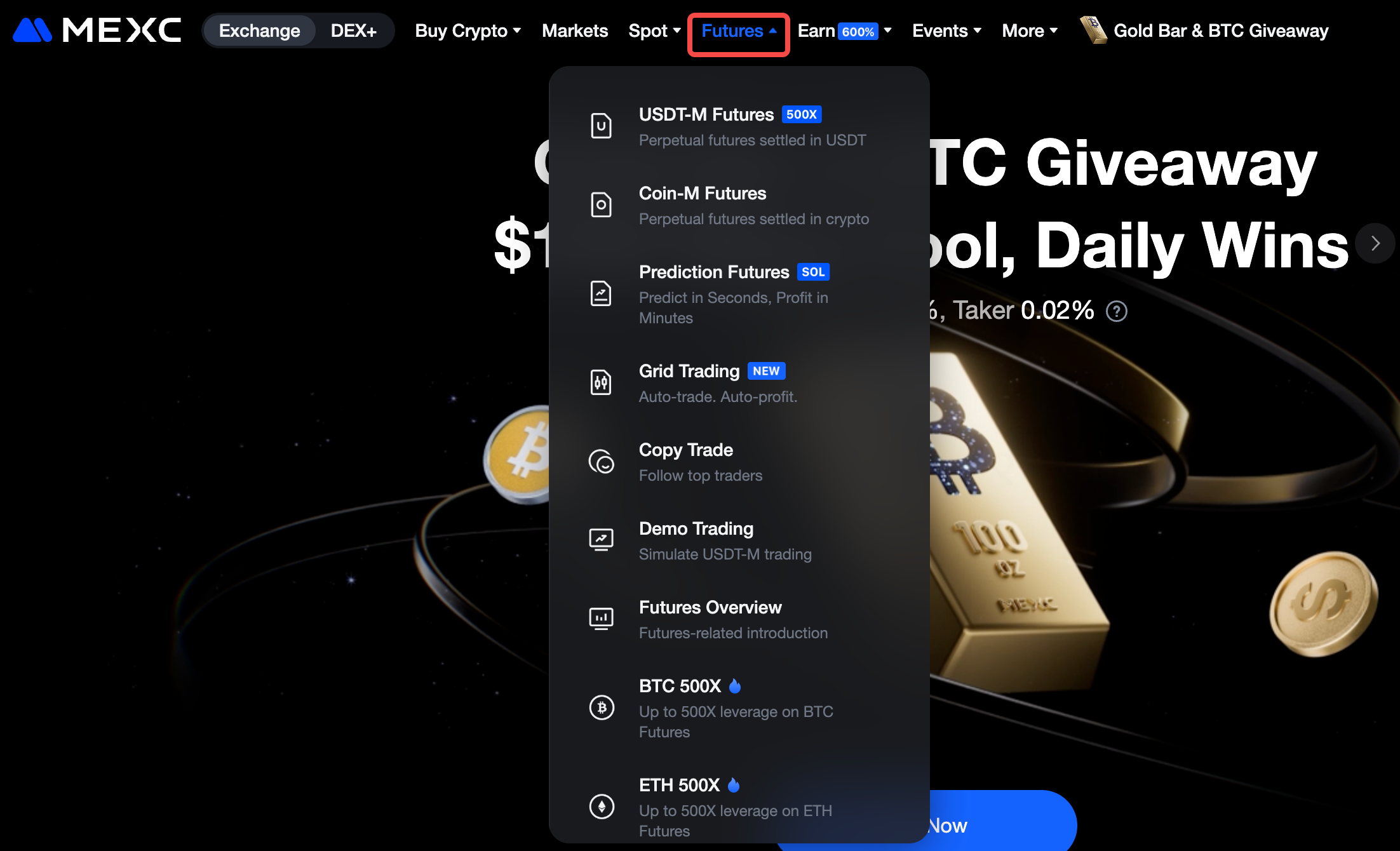
5.2 If MEXCers plan to trade on their mobile device, use the following guide to buy crypto Futures on the MEXC App:
Tap the MEXC App and go to the bottom menu's Futures section.
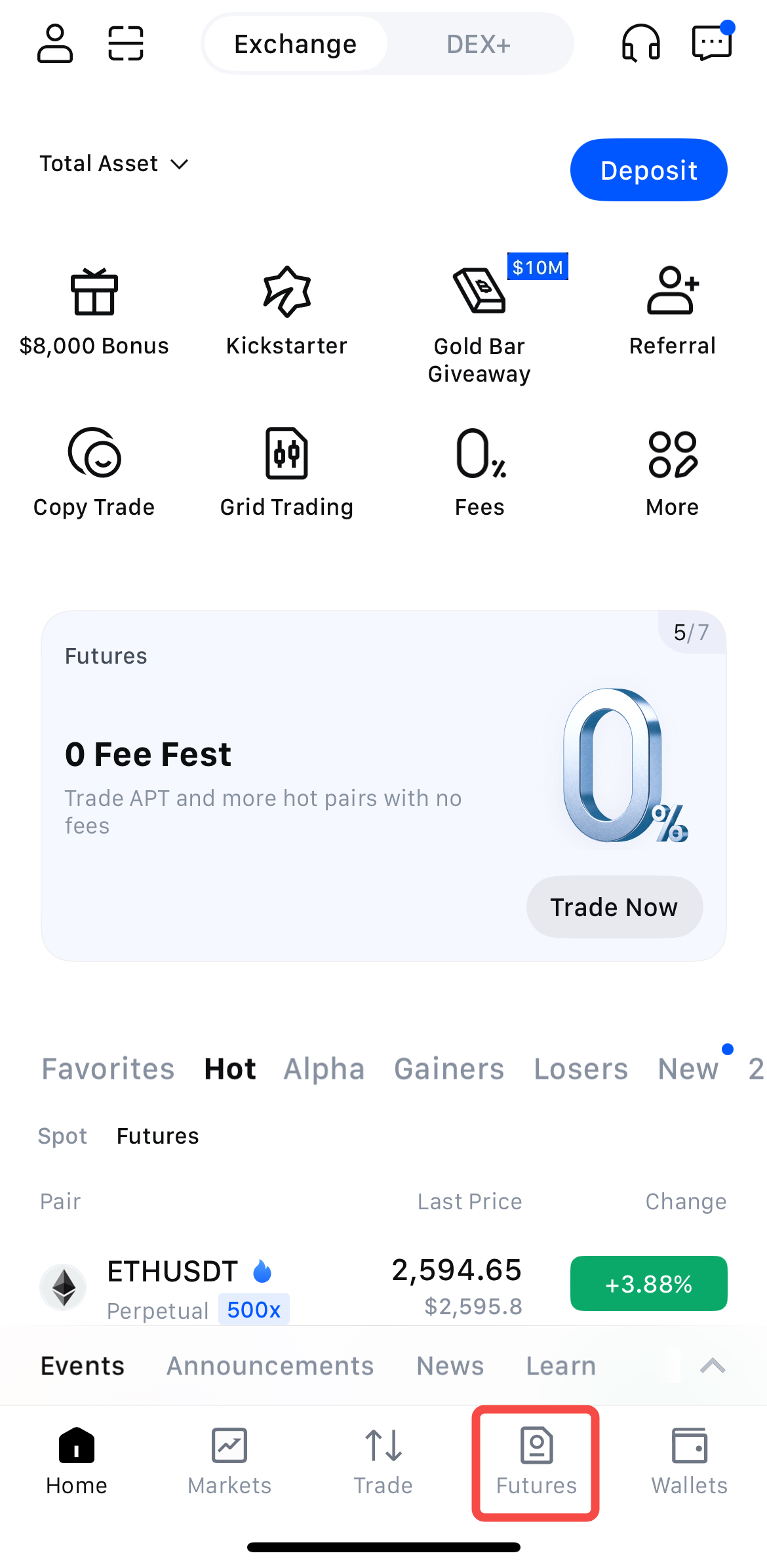
MEXC's Futures trading interface provides every trader with all the essential tools free of charge. The terminal is user-friendly and clearly presents all the necessary information at a glance.
MEXC Website:
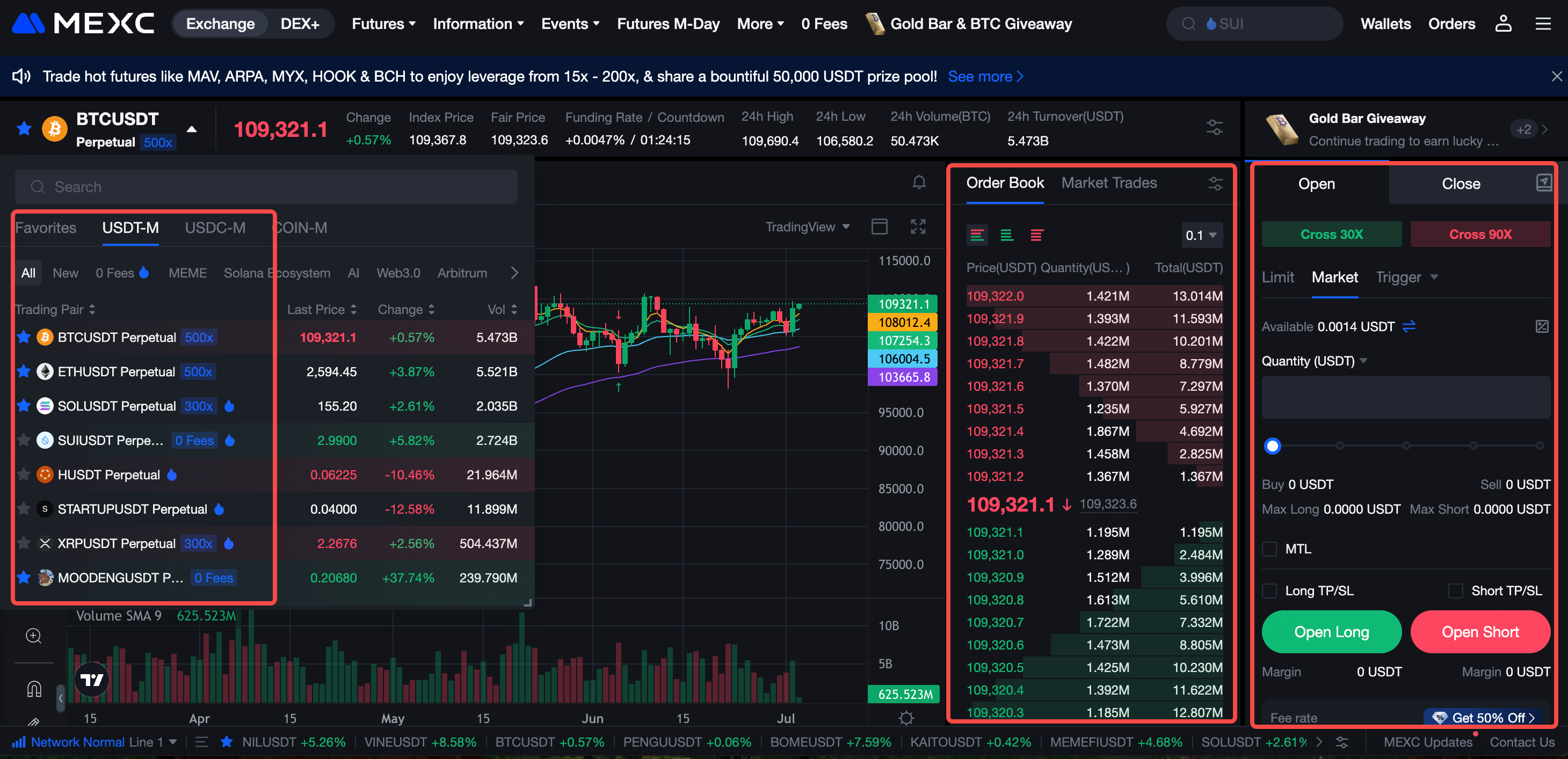
MEXC App:
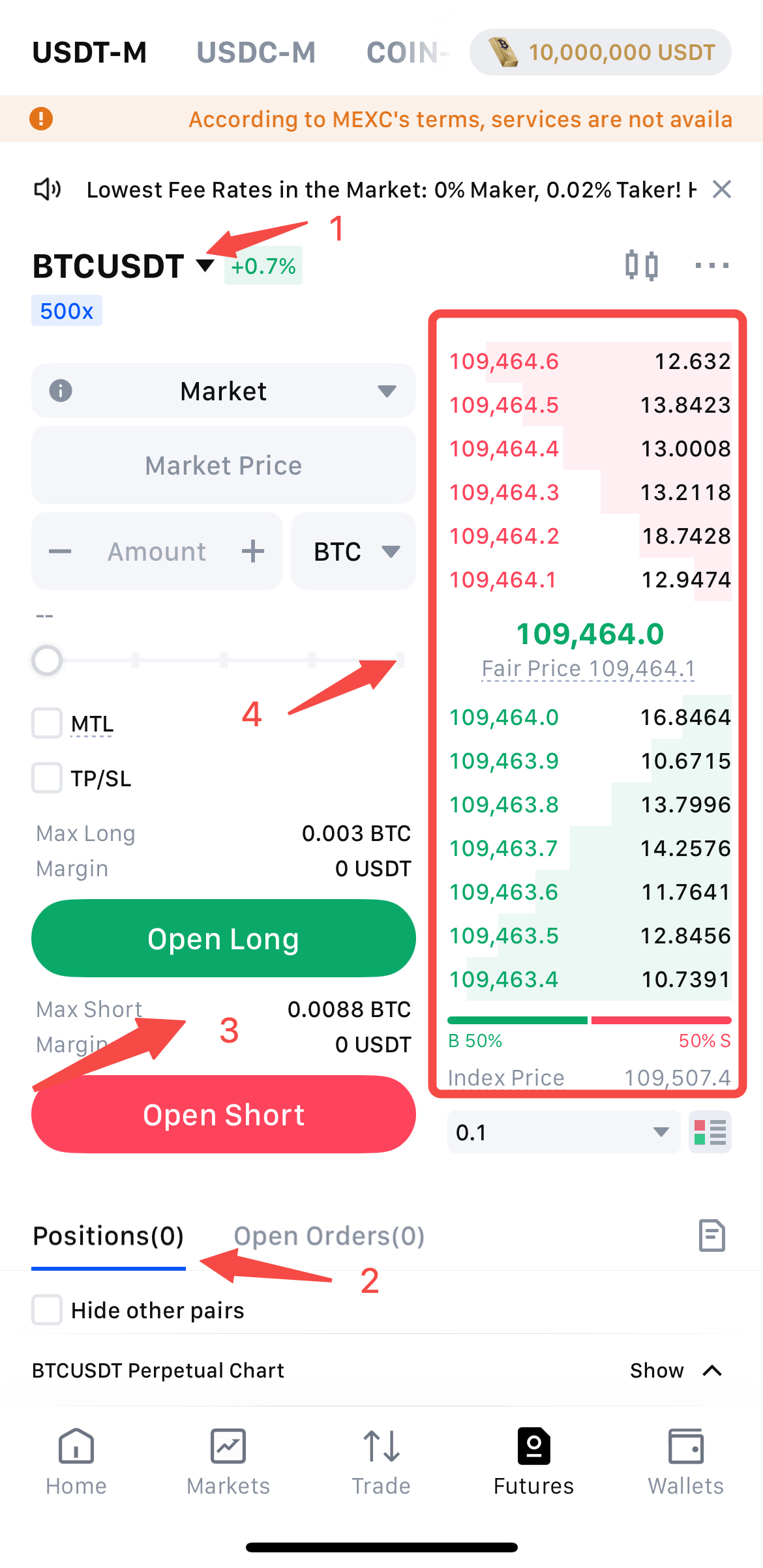
As shown in the image above:
1: The top menu bar allows you to select the trading pair for the Futures contract you want to trade.
2: The bottom of the screen displays your positions and order details.
3: The order book on the left side of the screen shows what other traders are buying and selling, helping you understand current market conditions.
4: The right side of the screen has the order placement button.
*BTN-Start Trading Futures&BTNURL=https://www.mexc.com/futures/BTC_USDT *
6. How to Trade Futures on MEXC
To start trading Futures on MEXC, you need to transfer funds from your Spot account to your Futures account. When trading Futures, you can specify the price and quantity of the asset you want to trade and confirm your order by selecting either the "Open Long" or "Open Short" option.
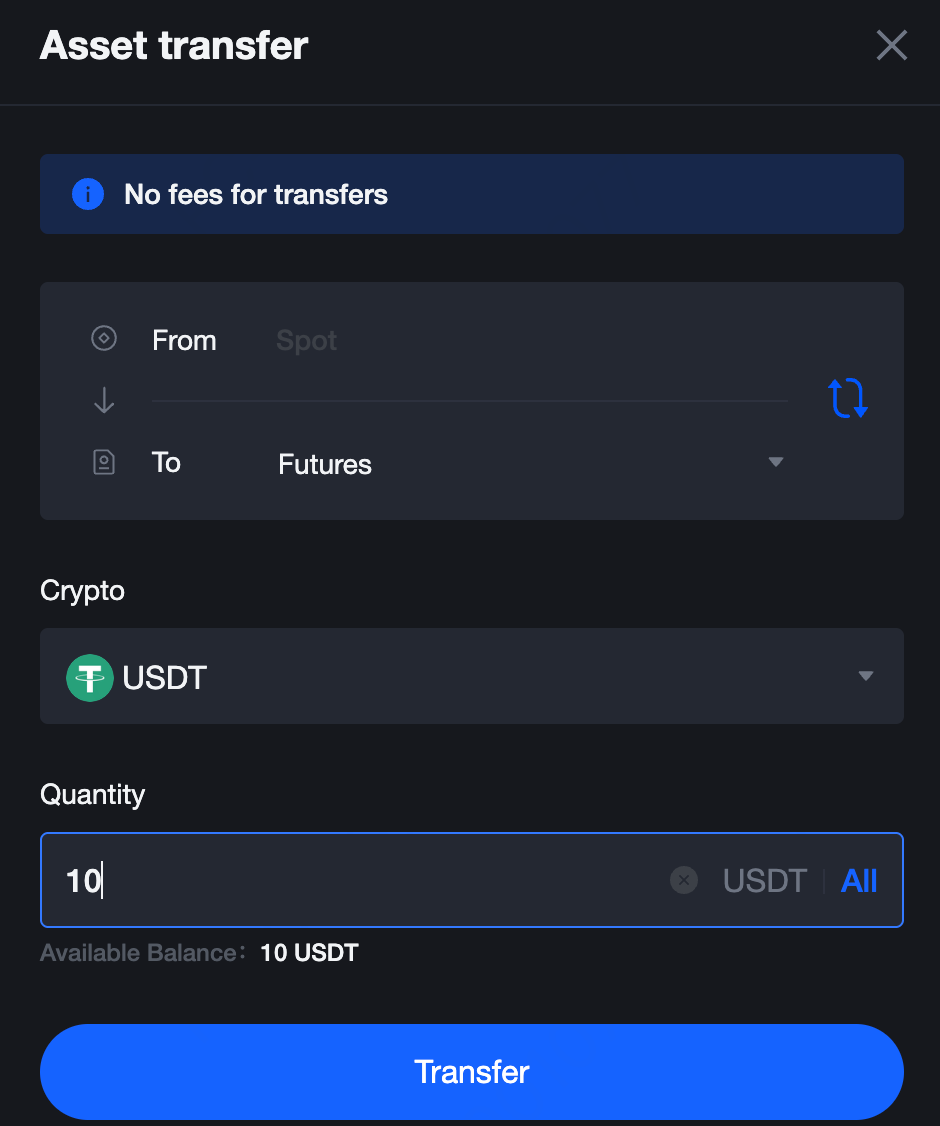
MEXC offers different leverage multipliers for different Futures trading pairs.
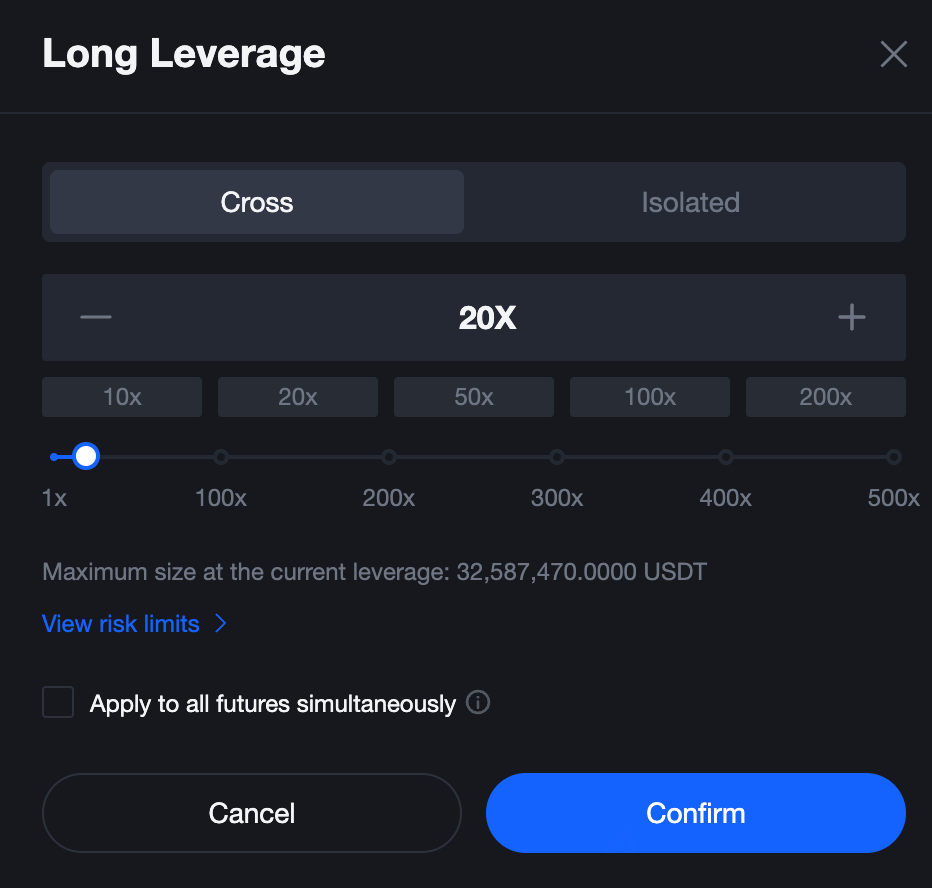
MEXC Exchange supports trading leverage of up to 500x. The maximum leverage depends on the initial margin and maintenance margin requirements.
The exchange allows users to adjust their long and short positions in Cross Margin mode. For example, you can set long positions at 30x and short positions at 90x. To hedge risk, traders can adjust their trading leverage from 90x down to 30x.
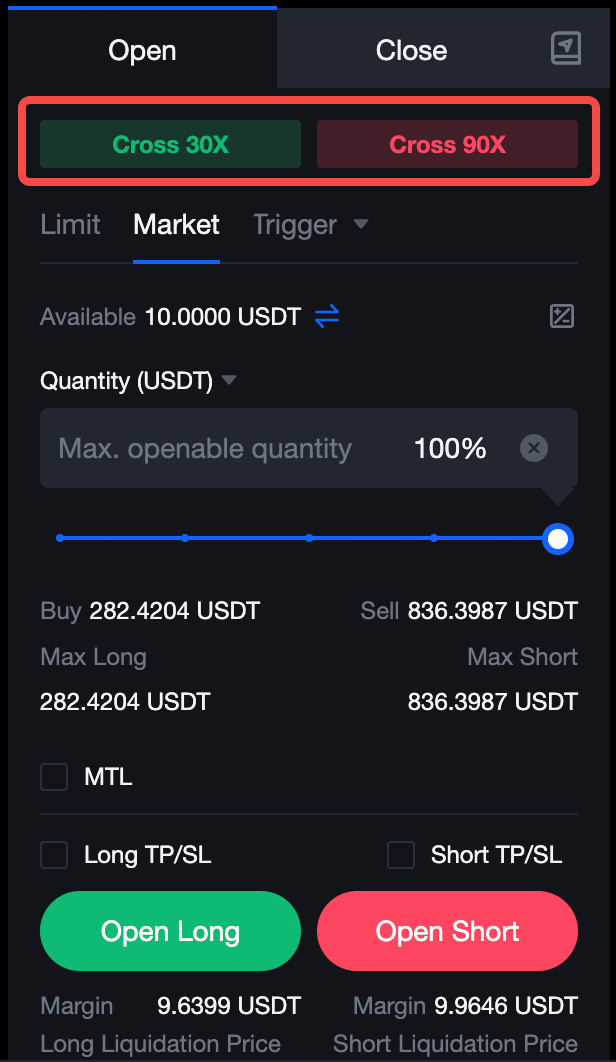
The platform supports traders with different margin preferences by offering various margin modes:
In Cross Margin Mode, margin is shared between two positions opened on the same crypto asset. Any profit or loss from one position can be used to adjust the balance of another trade.
In Isolated Margin Mode, only the margin for the specific open position is used. In case of a loss, only the margin allocated to that specific position will be affected. This keeps the rest of your crypto balance untouched. This is the best option for all new traders, as it helps protect the main balance of your crypto assets.
By default, all traders start with Isolated Margin Mode.
*BTN-Start Trading Futures&BTNURL=https://www.mexc.com/futures/BTC_USDT *
7. Crypto Futures Trading Tips
Crypto futures trading is a method of going long or short on market price movements using leverage and derivatives. While it has high profit potential, it also carries high risk, so mastering the right trading techniques is crucial.
7.1 Set a Clear Trading Plan
Successful futures trading begins with a well-defined trading plan:
Set goals: Define your targets, including expected profits and acceptable maximum losses.
TP/SL (Take Profit / Stop Loss): Set a take-profit (to lock in profits) and a stop-loss (to limit losses) level before each trade. Example: Aim for a 10% profit and set a 5% maximum loss.
Position management: Don't use all your funds in one trade. It's recommended to keep the risk per trade within 1%-2% of your total account balance.
Example:
If your account balance is $10,000, the maximum risk per trade should be $200 (2%). If your stop-loss is set at 5%, your position size should be $4,000 (200 ÷ 0.05).
7.2 Learn Technical Analysis
Technical analysis is a key tool for predicting market trends. Common techniques include:
Understanding Support and Resistance:
Support level: A point where the price may bounce back up during a decline.
Resistance level: A point where the price may retreat during an upward movement.
Tip: Go long at support and short at resistance, but always confirm with other indicators.
Common Technical Indicators:
Moving Average (MA): Helps identify trend direction. For example, a short-term MA crossing above a long-term MA signals a potential buy (golden cross), while the opposite indicates a sell (death cross).
Relative Strength Index (RSI): Indicates whether a market is overbought or oversold. RSI above 70 = overbought; below 30 = oversold.
Bollinger Bands: Help determine price volatility range and breakout direction.
7.3 Manage Emotions and Avoid Overtrading
The crypto market is extremely volatile, and traders can be emotionally influenced. Key emotional control tips include:
Control greed and fear: Don't blindly add to positions during rallies or panic close during dips.
Avoid chasing highs or selling lows: Wait patiently for confirmed trade signals and don't act impulsively on short-term fluctuations.
Take regular breaks: Staring at the screen too long can impair judgment. Maintain a healthy mental state.
7.4 Risk Management Tips
7.4.1 Use Leverage Wisely
High leverage can amplify profits, but also significantly increases liquidation risk. Beginners are advised to start with low leverage (e.g., 3x) to gradually adapt to market fluctuations.
7.4.2 Diversify Risk
Avoid putting all your funds into a single trading pair. Diversification helps reduce the impact of volatility in any one market.
7.4.3 Adjust Positions Regularly
Adapt your position size based on market conditions. For instance, when the market is uncertain, reduce your exposure to lower the risk.
Disclaimer: This information does not provide advice on investment, taxation, legal, financial, accounting, consultation, or any other related services, nor does it constitute advice to purchase, sell, or hold any assets. MEXC Learn provides information for reference purposes only and does not constitute investment advice. Please ensure you fully understand the risks involved and exercise caution when investing. MEXC is not responsible for users' investment decisions.